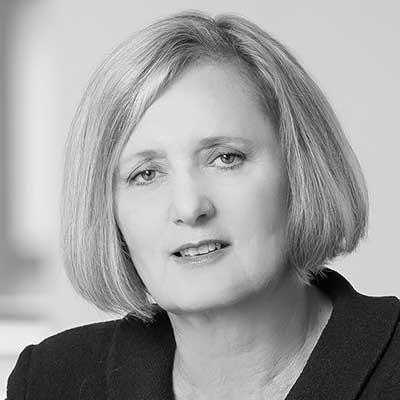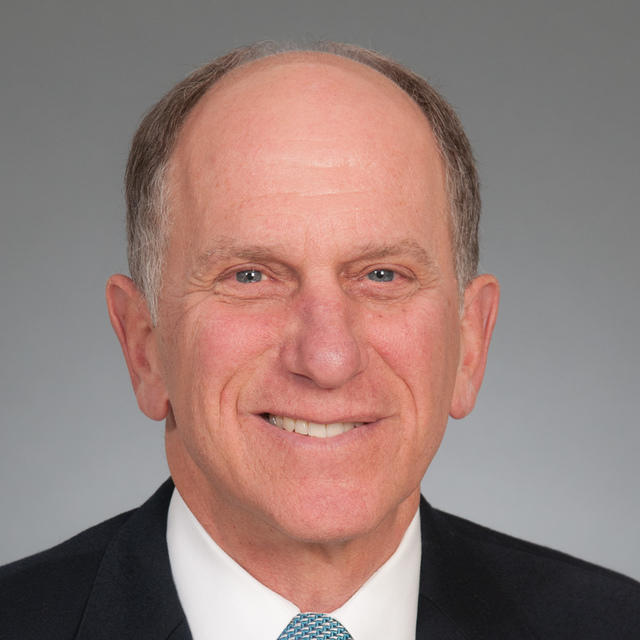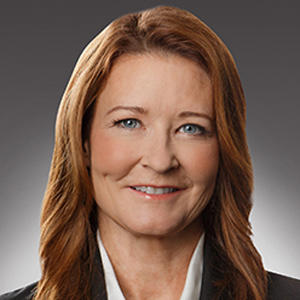The Orbach Group — a real estate firm better known for flipping rent-stabilized apartments before Albany’s rent law overhaul last summer — recently nabbed a portfolio of 700 age-restricted senior housing units in New York and Pennsylvania.
In a sign of the times, the $75 million deal closed via Zoom in May, according to the buyer.
Meyer Orbach, the company’s CEO, pointed out that the five residential complexes are not nursing homes, which require around the clock care and led to headline news in recent months due to coronavirus outbreaks in many facilities around the country.
In 2018, Orbach was one of several rental landlords cited in a New York Times investigation alleging the firms used aggressive eviction strategies.

Meyer Orbach, The Orbach Group
During a recent interview with The Real Deal, he said he’s not worried about raising eyebrows due to his firm’s latest purchase, noting that the residents and properties will be given the necessary care.
“We are long-term investors and will always put the tenants and the property before monetary returns,” Orbach maintained. “We will adjust our operations and underwriting to maintain safety precautions.”
Despite the reported outbreaks in skilled nursing and assisted living facilities, investors still see big opportunities in senior housing — an industry that CBRE now pegs at about $420 billion. While such properties typically come with strict caps on rent increases and other regulations to protect residents, investors can still see profits as asset values rise, whether they hold or sell.
And since the pandemic hit the real estate industry like a brick in mid-March, other firms have seized the opportunity to buy senior housing at steep discounts. Perhaps not surprisingly several reported deals in recent months have been in South Florida, which has a large concentration of retirees.
Even before the coronavirus bore down on nursing home populations across the country, the senior housing industry was considered a safe bet in a recession and had been gaining traction with private equity and institutional investors. The sector has outperformed all other commercial real estate asset classes since 2003, while average rents have increased every quarter since 2009, according to the NCRIEF property index, a benchmark for commercial property investments.
But as the country’s first Baby Boomers turn 75 and decide whether to risk a second wave of Covid-19, especially in poorly-run facilities, many investors are carefully scrutinizing senior housing operators before pulling the trigger.
“Investor interest has not gone away,” said Beth Mace, chief economist at the National Investment Center for Seniors Housing and Care. “There is uncertainty clouding expectations, but that’s the case with everyone. No one knows what will happen.”
“At the beginning steps”
While many are actively searching for discounted properties, the risk of making headline news in a sector that provides vital care to the elderly, and often most vulnerable, has given other investors pause.
We are really at the beginning steps of the Baby Boomer wave hitting senior housing. It should be one of the fastest growing real estate sectors, and investors are cognizant of that.
In 2015, for example, the real estate investment firm Allure Group paid the city of New York $16 million to lift restrictions on the deed to the Rivington House, a specialty nursing home for patients with HIV and AIDS, allowing for its conversion to luxury condominiums. The sale of the property a year later led to a major public outcry and a $2 million settlement with New York’s attorney general in 2018.
Some remain wary of that risk that comes with improper stewardship of skilled nursing facilities and less closely monitored senior housing during the pandemic, according to industry experts. A recent analysis by the Times, for instance, found that a glaring 43 percent of coronavirus deaths in the U.S. were linked to nursing homes and other long-term assisted living facilities.
But the country’s senior housing market isn’t being neglected in these unprecedented times. And that’s largely because it’s supported by an aging America.

Charles Bissell, JLL
“We are really at the beginning steps of the Baby Boomer wave hitting senior housing,” said Charles Bissell, a managing director in JLL’s capital markets group who specializes in the sector. “It should be one of the fastest growing real estate sectors, and investors are cognizant of that.”
By 2050, there are expected to be nearly 86 million people over the age of 65, a projected increase of about 50 percent, according to recent data compiled by CBRE. Many in that bracket who are currently homeowners will be looking to downsize, with senior living communities serving as an easy alternative to a smaller house or condo.
Senior housing also provides a range of options for retirees. An independent living facility can closely resemble a rental apartment complex with some medical staff on site, while a skilled nursing facility is likely to have double-occupancy rooms with staffers who monitor and care for residents 24/7.
“If you have a close relative you care for that needs that type of care, it’s a need, not a want,” Bissell said. “Instead of buying the boat, you use that money to support your father or mother for assisted living.”

Susan Barlow, Blue Moon Capital
The sector continues to attract large institutional investors, said Susan Barlow, chief operation officer at Blue Moon Capital, a private equity-backed senior housing operator. Blue Moon’s investors include some of the nation’s largest public pension funds, including the California State Teachers Retirement System, which manages a portfolio of $242.8 billion in total assets, and the United Nations Joint Staff Pension Fund, which manages a portfolio of $63 billion.
During the last recession, senior housing ”outperformed other property sectors [with] rental increases while everyone else had negative rent growth,” even at the height of the financial crisis, Barlow noted.
Investors don’t expect that to change, despite the largest economic upheaval since 2008 being fueled by a catastrophic public health crisis.
In 2020’s first quarter, average senior housing rents increased by 2 percent, instead of the usual 3 to 5 percent, according to CBRE. The second quarter, which will show a much greater impact from coronavirus on the U.S. economy, may be a different story.
But many buyers remain bullish on senior housing. In April, California-based Pacifica Companies snapped up a 172-unit senior housing complex in Miami for just over $12 million — less than half what it traded for in 2006. Three weeks later, another California firm, asset-management Kayne Anderson Capital Advisors, bought a Miami senior housing facility for $55.7 million, a steep discount from its $78 million price tag five years ago.
“In a recession, when every dollar gets scrutinized, needs-based [products and properties] are where the money’s going to go first,” JLL’s Bissel said.
“This sort of thing just happens”
The latest opportunistic plays among senior housing investors include buying up distressed assets as well as embattled operators.
Private equity firms had already made big investments in the market in the first quarter of the year, accounting for more than half of all transactions, data from CBRE shows. In 2019 alone, private equity investments in health care-related assets totaled a record $79 billion, according to the research firm Bain & Company.
Now other investors are searching for opportunistic buys, considering senior housing has also fared better than hotels and retail in the last few tumultuous months.

Richard Swartz, Cushman & Wakefield
“Investors are being very careful to make sure operators are following protocols,” said Richard Swartz, head of Cushman & Wakefield’s senior housing capital markets group.
“The hope is that if you are being a responsible operator, then you can demonstrate you’ve been up to standards, and this sort of thing just happens,” Swartz added in reference to the coronavirus outbreaks in many U.S. nursing homes.
For some, though, it can still be hard to do deals of any kind.
“Getting a lender to tour the property, getting your third-party reports down, getting license reports done, even recording a deed” has been a challenge for some, Bissell noted. “It’s these barriers that have really slowed the transaction volume down.”
And with the possibility of a second wave of Covid infections as states reopen, some investors still prefer to watch from the sidelines.
“We were raising a fund, and had two closings, but now everything is on hold,” said Barlow of Blue Moon Capital. “Investors in every sector are just trying to figure out what to do and what not to do.”
But as deals start to pick back up, overall, the way investors assess and underwrite deals is changing and more senior housing owners are scrutinizing their operators — trying to sort out the good from the bad to minimize legal liability and headline risk.

Lisa Widmier, CBRE
“Skilled nursing has always been at risk of legal action. There are lawyers who are ambulance chasers,” said Lisa Widmier, executive vice president of senior housing capital markets at CBRE. “I anticipate there will be lawsuits, particularly in Washington [State] communities, where they didn’t follow proper protocol or there wasn’t a protocol.”
To guard against lawsuits, more than a dozen states have passed laws to grant immunity to nursing home providers. In New York, for example, more than 6,400 people have died from coronavirus in nursing homes and assisted care facilities since March.
The shield law was lobbied for by groups representing hospitals, nursing homes and non-profit senior housing providers. The provision, which was included in New York State’s budget, would grant nursing homes immunity from most lawsuits that arise from deaths related to the coronavirus.
“Liability exposure will be an ongoing discussion,” Barlow said of the lobbying efforts to provide immunity for senior housing operators in more states.
We have 2,500 seniors we’re taking care of. And it’s not like at this point we’re necessarily going to be changing anything for fear of liability — it’s way down on my list of worries.
“There are states where new immunity has been put in place specifically identified around the pandemic,” she added. “Because it was such wide-spread exposure, even those under the best of circumstances couldn’t protect against Covid-19.”
“Everybody and their mother”
Others downplayed the significance of the shield law — including affordable senior housing developers whose financing largely comes from municipal budgets. Among other big cuts, New York City’s affordable housing budget will be slashed by $583 million this year and $456 million next year, Politico recently reported.

Jeff Fox, Foxy Management
“Everybody and their mother in the entire real estate industry is lobbying Mayor Bill de Blasio on that issue,” said Jeff Fox, of Foxy Management, a Bronx-based affordable assisted living developer.
Paul Freitag, executive director of the West Side Federation for Senior and Supportive Housing and one of 163 signatories on a letter to de Blasio decrying the budget cuts, said he hopes workers are treated with “some level of compassion in future budgets given their role on the front lines.”
Freitag added that residents who live in affordable senior housing often receive Section 8 benefits and are less likely to pursue expensive litigation than those living in market-rate facilities where monthly rents can exceed $6,000.
“We have 2,500 seniors we’re taking care of,” he said. “And it’s not like at this point we’re necessarily going to be changing anything for fear of liability — it’s way down on my list of worries.”
Meanwhile, for the investors watching how things play out before they park their money in senior housing, it’s mostly a question of timing. The long-term outlook for the sector remains strong and some industry observers have even predicted a bump in new leases in the second quarter of 2020 due to pent-up demand.
But the breadth of the pandemic and economic fallout may still be the deciding factor in the end.
“Obviously a vaccine would be a godsend,” Cushman’s Swartz noted. “On the other hand, a resurgence in the fall could be a stumbling block.”
The high price of operating
The pandemic exposed gaping holes for nursing home operators, which had to rush to hire more staff during the outbreak.
That led to unplanned financial commitments, and those whose revenues fail to meet expenses face even greater challenges going forward.
“A real impact is the increased occupancy cost — staffing, cleaning, PPE, hazard pay,” said Beth Mace, chief economist at the National Investment Center for Seniors Housing and Care.
“The question is, are investors going to see that as a temporary condition?,” she added. “Labor is the highest cost of operating. Many communities have had to bring in temporary staff to do increased cleaning.”
But some say the surging unemployment rate could help drive down the cost of labor, a struggle that assisted living and skilled nursing operators have long contended with.
Before jobless claims skyrocketed in March and April, the labor market was tight and some operators had a difficult time finding qualified staffers for their buildings. Now, that problem could be alleviated by the growing number of potential candidates.
“Every black cloud has a silver lining,” said Charles Bissell, a JLL managing director who specializes in the sector. “Senior housing wage rates may stabilize or even decline.”
Jeff Fox, of Foxy Management, an affordable assisted living developer in New York City, echoed that sentiment.
“If you have a job and 20 people want that job,” he said, “you don’t necessarily have to pay top dollar.”
